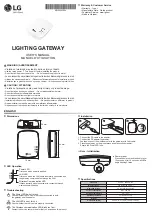
# ssh {hostname for file serving node}
Viewing software version numbers
To view version information for a list of hosts, use the following command:
<installdirectory>/bin/ibrix_version -l [-h HOSTLIST]
For each host, the output includes:
•
Version number of the installed file system
•
Version numbers of the IAD and File System module
•
Operating system type and OS kernel version
•
Processor architecture
The
-S
option shows this information for all file serving nodes. The
-C
option shows the information
for all X9000 clients.
The file system and IAD/FS output fields should show matching version numbers unless you have
installed special releases or patches. If the output fields show mismatched version numbers and
you do not know of any reason for the mismatch, contact HP Support. A mismatch might affect the
operation of your cluster.
Troubleshooting specific issues
Software services
Cannot start services on the management console, a file serving node, or a Linux X9000
client
SELinux might be enabled. To determine the current state of SELinux, use the
getenforce
command. If it returns
enforcing
, disable SELinux using either of these commands:
setenforce Permissive
setenforce 0
To permanently disable SELinux, edit its configuration file (
/etc/selinux/config
) and set
SELINUX=parameter
to either
permissive
or
disabled
. SELinux will be stopped at the next
boot.
For X9000 clients, the client might not be registered with the management console. For information
on registering clients, see the HP StorageWorks X9000 File Serving Software Installation Guide.
Failover
Cannot fail back from failover caused by storage subsystem failure
When a storage subsystem fails and automated failover is turned on, the management console
will initiate its failover protocol. It updates the configuration database to record that segment
ownership has transferred from primary servers to their standbys and then attempts to migrate the
segments to the standbys. However, segments cannot migrate because neither the primary servers
nor the standbys can access the storage subsystem and the failover is stopped.
Perform the following manual recovery procedure:
1.
Restore the failed storage subsystem (for example, replace failed Fibre Channel switches or
replace a LUN that was removed from the storage array).
2.
Reboot the standby servers, which will allow the failover to complete.
Cannot fail back because of a storage subsystem failure
This issue is similar to the previous issue. If a storage subsystem fails after you have initiated a
failback, the configuration database will record that the failback occurred, even though segments
80
Troubleshooting
















































